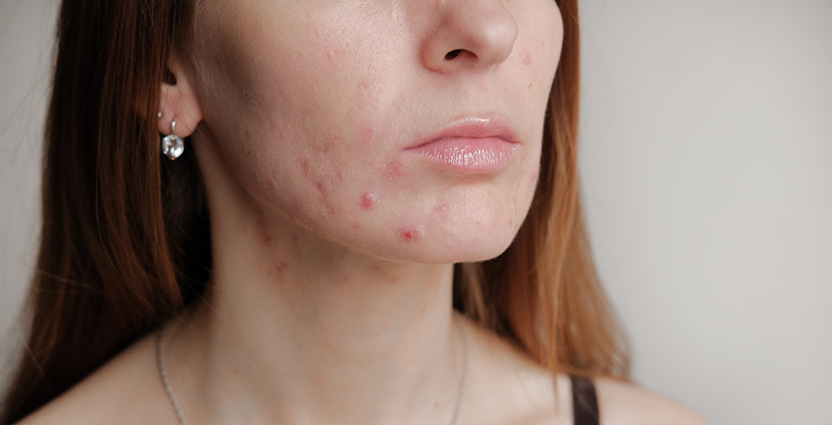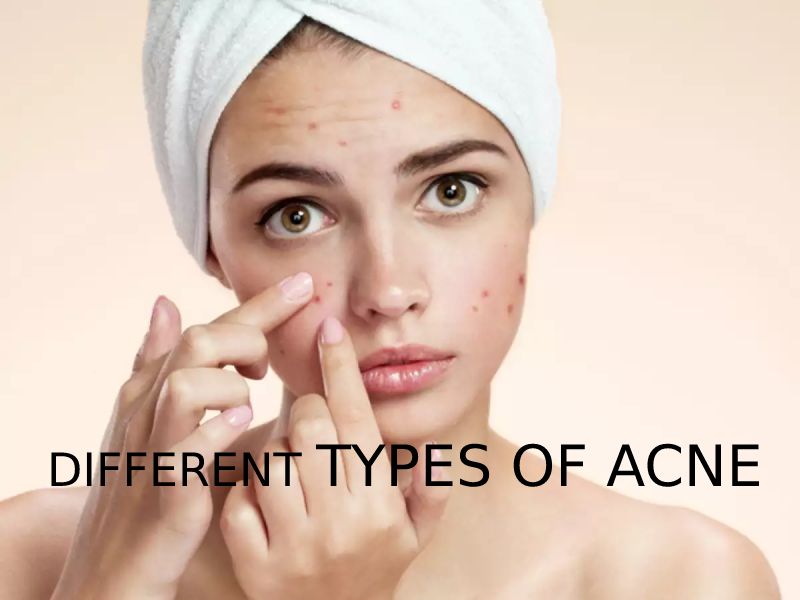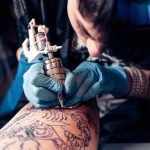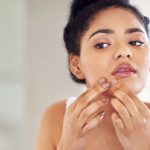Teenagers frequently get acne, but you could also experience it. Even as an adult, your body relies on the sebaceous glands beneath your skin to maintain healthy oils in your hair and skin. These glands secrete oily sebum to keep your skin and hair from drying. The hair moves through your body and the comforts of your skin as it climbs the follicles.This articles gives information about the different types of acne and treatment for it.
Typically, the sebum carried out from your body by your hair follicles is dead skin. It can cause inflammation if it builds up in the sebum of the pore and clogs it in small amounts on your skin: excess sebum and dead skin cells produced by your body plug blemishes when they clump together.
Pimples can look like clogged whiteheads with air-blocked follicles, depending on the location of the blockage and whether you have inflammation. Follicles are clog with blackheads darken in color. Pustules, often known as pimples, are inflammatory follicles blocks with pus or cysts, which are huge, uncomfortable bumps that extend deep beneath the skin and are filled with pus when the obstruction is exposed to air.
Table of Contents
VARIOUS TYPES OF ACNE?
1.Rolling Spots
They resemble large, 4-6-meter-long saucer-shaped depressions. They frequently have a form that resembles an “M” but with smooth edges. The skin pulls inward when the deeper tissue or subcutaneous layers of your inner skin, fibrous tissue, or fibrous ligaments link to them. Rolling scars is the term for this. Numerous therapies are available, including energy-based tools like fractional ones or light or lasers. Examples of medical devices include CO2, erbium laser, dermapen, derma roller, PRP, skin needling, and surgical suction.
2.Boxcar Parking.

Rolling scars are the opposite of these. They have gracefully rounded, squared edges with sharp, vertical edges. Similar to chicken pox scars, they are. They have large bases and are very deep. Macules are color, rough, texture, and noticeable from a distance. They appear to be scratch marks on your skin. Surgery is used as a boxcar scar treatment. It is termed punch excision to remove them. Or subcision or punch elevation. Small spots react to energy, light, or laser. MNRF control, fractional CO2 laser, or erbium laser.
3.Icepick Marks

These can seem insignificant, yet they contain a lot more. They are deep and narrow, which makes them intense. They are more comprehensive than two meters and seem unreasonable. Nonetheless, dig deeper. Their edges are pretty sharp. These also responded favorably to therapy. They appear to be large, empty pits. They look like pores on you quite plainly because the skin and covering are so challenging. Treatments like the TCA (trichloroacetic acid) cross, the punch excision procedure, and fractional lasers are particularly successful. Atrophic scars are frequently treated with fat grafting and dermal fillers.
4.Whiteheads and blackheads

You’ll notice a little lump that appears white or flesh-colored if the pore closes. These whiteheads are. These develop due to dead skin cells, germs, and excess oil clogging pores.
5.Pimples and blackheads (dark patches)
You’ll notice a blackhead if the pore becomes clogged with particles yet remains open. Refrain from washing because the black specks aren’t dirt. Your acne will only become worse.
6.Recalcitrant blackheads and whiteheads
You might wish to contact a dermatologist if you still notice spots on your skin. The removal of comedones, the medical word for blackheads and whiteheads, could be helpful. Another choice is using prescription-strength acne medication. Give the drug six to eight weeks to take effect.
7.Early breakouts
You’ll notice tiny red bumps when extra oil, germs, and dead skin cells irritate the skin and create inflammation (redness and swelling). This particular sort of acne blemish is known medically as a papule. They feel tough. The area may feel like sandpaper if you have a lot of papules.
8.Pimples with pus
A pustule is a medical word for this particular sort of acne lesion. These lesions resemble papules in many ways, but spots contain a yellowish fluid. A yellow or white center is a common sight.
9.Cystic and nodular acne
 These acne lesions go far beneath the skin’s surface, and when they cure, they frequently leave behind long-lasting acne scars. You will require a dermatologist’s assistance to remedy acne that resembles this.
These acne lesions go far beneath the skin’s surface, and when they cure, they frequently leave behind long-lasting acne scars. You will require a dermatologist’s assistance to remedy acne that resembles this.
If acne damages the skin, how to treat it quickly to get rid of it.
Acne affects 80% of people at some point in their lives. All of us despise acne. Unfortunately, there isn’t a single cure-all for acne’s 20 various varieties. to instead attain a long-lasting recovery. Acne frequently occurs throughout adolescence because of hormonal changes, an increase in testosterone, and an excess production of sebum, so you should start with the right diagnostic. However, anyone can experience it. Acne may result from it in some cases. Disease, particular drugs, and genetics are all potential causes.
Your doctor might suggest an over-the-counter moisturiser with one of several active components if you have mild acne. The skin-clogging dead skin is removed, excess oil is dried off, and benzoyl peroxide kills production. Salicylic acid lessens blocked pores and skin damage. Additionally, it removes blackheads and whiteheads. Lactic acid is an example of an alpha hydroxy acid that helps eliminate dead skin, calm inflammation, and encourage the development of new, smoother skin. Sulfur dries up excess oil and eliminates dead skin. These are potent compounds that might cause skin irritation. strictly adhere to the usage guidelines. Your dermatologist may recommend stronger prescription lotions like vitamin A, which lessens the buildup of dead skin in your pores, if over-the-counter creams are ineffective.
Your skin’s rash is eliminated by topical antibiotics or by using benzoyl peroxide in conjunction with topical antibiotics and just recommend oral drugs for mild to moderate conditions, or they might advise oral meds in addition to topical treatment. Oral antibiotics are one of these medicines, and isotretinoin only works in the most extreme cases. Oral antibiotics also kill the appearance and lessen inflammation. Your discomfort may be reduced and a very large wound may heal faster with a corticosteroid injection. contraceptives for females. To taper down, doctors may prescribe estrogen-containing tablets.
Other Acne Treatments and Their Types.
The scar becomes shallower as a result. It is a depressed or atrophic scar because it responds to treatment more readily.Another kind of scar is referred to as a rise. The opposite of depressed acne scars are raised ones. When the body creates too much collagen during the healing process, spots develop. Hypertrophic and keloid scars come in two different varieties. Scars. They are the outcome of inflammatory acne, and a diet results in an overabundance of scar tissue rather than healthy skin. Your skin might be to blame. a wavy, uneven individual. Hypertrophic scars are high, thick, and wide scars that develop on the skin throughout the healing process.
Typically, these are little bumps that could be red, pink, or skin-colored. They recover more quickly and are smaller than keloids. Keloid scars eventually go away after that. Keloid scars are typically larger than hypertrophic scars.They can be set up in a bigger space Original place of injury. These are often pink or purple in hue and keep growing over time. They are extremely challenging to treat. They are treated using silicone sheets as well as surgery, lasers, and steroid injections. For the treatment of minor keloids or hypertrophic scars, cryotherapy is an option. The scar, however, is dark, pigmented, and dramatic. Or, regardless of the type of scar, we can improve and surely lessen its look.
Results Of Different Acne Treatments
But acne scars can never completely disappear. A scar is permanent. You can make the scar virtually invisible. However, skin tissue cannot naturally take the place of scar tissue. However, there are numerous safe and efficient treatments. Scars can be entirely eliminated with effective treatments for acne scars. The scars should be nearly undetectable in the beginning. Many people have multiple scar types, thus one therapy will not be sufficient for them. Different therapies will be recommended by your doctors. They can also prescribe based on your scars.
Reduce Types Of Acne With 15 Foods

Orange
Carrots
Lemon juice
Papaya
Tomatoes
Berries
Nuts
Pumpkin seeds
Whole grains
Legumes
Sweet Potato
Yogurt
Broccoli
spinach
Fatty fish
Also read: Ideal Sleeping Time And Tips for Improving Your Nighttime Routine






